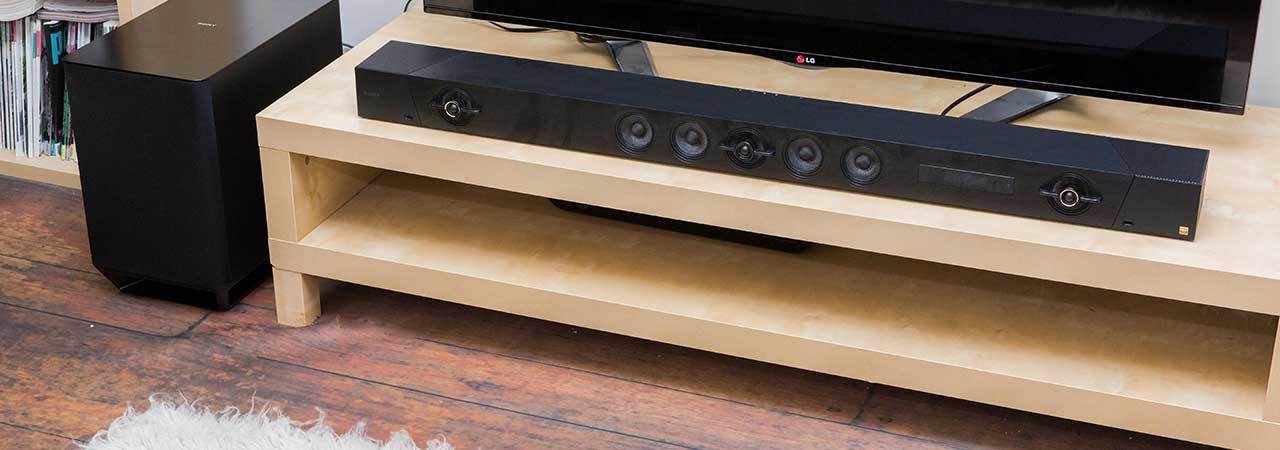
The 5 Best Sony Soundbars for
Best Sony soundbars
Every year, TVs seem to get thinner. This makes finding a spot to place your TV a lot easier. But there is a drawback to ultra-thin TVs: you may lose sound quality.
If you want sound that matches its picture quality, you can still get it. How? With a high-quality soundbar.
Sony is a time-tested brand, and it makes a wide range of soundbars. Such a wide range, in fact, that finding the best one for your home entertainment system can be hard. You must choose the right type, connections, number of channels, and other features.
With so many options to sort through, shopping can feel like a chore. That’s where FranksWaffle comes in.
With this buying guide and our recommendations, it is easy to find the right products for your home theater.
Read on to learn about the best Sony soundbars and how to find one.
Soundbar types
A soundbar is an all-in-one speaker that provides high-quality sound for your TV.
Unlike other systems, it has a slim design. It takes up little space. And, with as few as two speakers, it’s easy to set up.
It may have stereo or surround sound to make you feel like you’re at the movies.
Two types are available: active and passive.
- Active soundbars are common. They have built-in amplifiers. Plug into your TV, cable box, or other device for top-notch sound.
- Passive soundbars are like most speaker systems; they need a separate receiver. More time is needed for setup. But, some home theater buffs prefer the quality.
Features
Size
Soundbars don’t take up much space. You should have room left over in your entertainment center.
Nearly all are 40 inches long or less. Width is usually under 3 inches.
Because of the size, you can fit one in front of your TV without blocking your view.
Subwoofer
A subwoofer is a speaker that makes low bass frequencies. It rounds out the audio.
A subwoofer may be separate or built in.
Not all soundbars have a subwoofer. However, for intense movies and games, it boosts sound quality.
Connections
- HDMI: ModernTVs, Blu-ray players, cable boxes, and other devices usually connect to a soundbar via HDMI.
- Analog: If you have an older TV, it may need an analog connection.
- Optical digital connection: This is another way to connect a TV, cable box, Blu-ray player, or portable music device.
- USB: Insert a USB storage device like a flash drive to get media files for playback.
- Bluetooth: This lets you wirelessly stream audio from your smartphone, tablet , or computer. Some have two-way Bluetooth. With this, you can stream music from the soundbar to Bluetooth speakers or headphones.
- WiFi: Love Spotify? Pandora? Built-in WiFi lets you stream from these services.
Channels
For top-notch audio, choose a system with multiple amplifier channels.
Some only have 2.1 channels. A 2.1 can boost audio quality, but it cannot provide surround sound.
For the best audio, pick a model with five or seven channels, a subwoofer, and rear speakers.
Make sure no items are blocking the front or sides of your soundbar.
Wireless speakers
For multi-channel soundbars with rear speakers, wireless speakers are great.
You have more options for placement. This helps bring true surround sound to your home theater.
Sofa Mode
Sofa Mode lets you put the subwoofer beneath your couch. You will feel the low bass as you relax and watch.
You can also put it next to your sofa or other furniture.
4K compatibility
If you have a 4K television, choose a soundbar system that works with 4K video.
These machines have a pass-through that can send the 4K signals to your television.
Tips
- Sony is not the same company as Sonos. But, many of its products share features with Sonos products. This includes the SRS line.
- Life is easier with a remote control. Have a Sony TV? You may be able to use its remote on your soundbar.
- If you choose a soundbar with Bluetooth, note the range. Some have a short range of 10 feet or less.
- Don’t forget to check out other great home audio companies. These include Vizio, RCA, LG, Samsung, Sonos, and Bose.
A backlit remote control is a great way to manipulate your device from the comfort of the couch late at night.
Pricing
Price varies based on the number of channels, whether there is a subwoofer or speaker, and features. In general, you can expect to pay between $130 and $1,500.
Inexpensive
Soundbars with 2 to 2.1 channels and no subwoofer or a built-in subwoofer usually cost $100 to $200.
Mid-range
Soundbars with 2.1 to 5.1 channels and a separate subwoofer or speaker usually cost $200 to $800.
Expensive
Soundbars with 5.1 to 7.1 channels and a separate wireless subwoofer or speakers usually cost $800 to $1,500
FAQ
Q. Active or passive: which offers the best audio quality?
A. Active soundbars are easy to use and set up. This is due to the built-in subwoofer, speakers, and/or amplifiers. But, they don’t provide the crispest audio.
Passive soundbars offer better sound. This is thanks to a separate subwoofer or speaker system.
If you choose one with a wireless subwoofer or speakers, you’ll get great audio and easy setup, too.
Q. Are Dolby Atmos and other audio formats supported?
A. Many have Dolby Atmos and/or DTS:X compatibility. This creates theater-quality surround sound.
Dolby Atmos-compatible soundbars have a label with three numbers. The third tells you how many upfiring speakers there are.
For example, a 7.1.2 model has seven channels, one subwoofer, and two upfiring speakers.
Q. Can I connect additional wireless speakers?
A. You may be able to add extra speakers for a true surround sound experience.
However, you can’t add speakers to many low-end models.
Check product details if you plan to use extra speakers.
